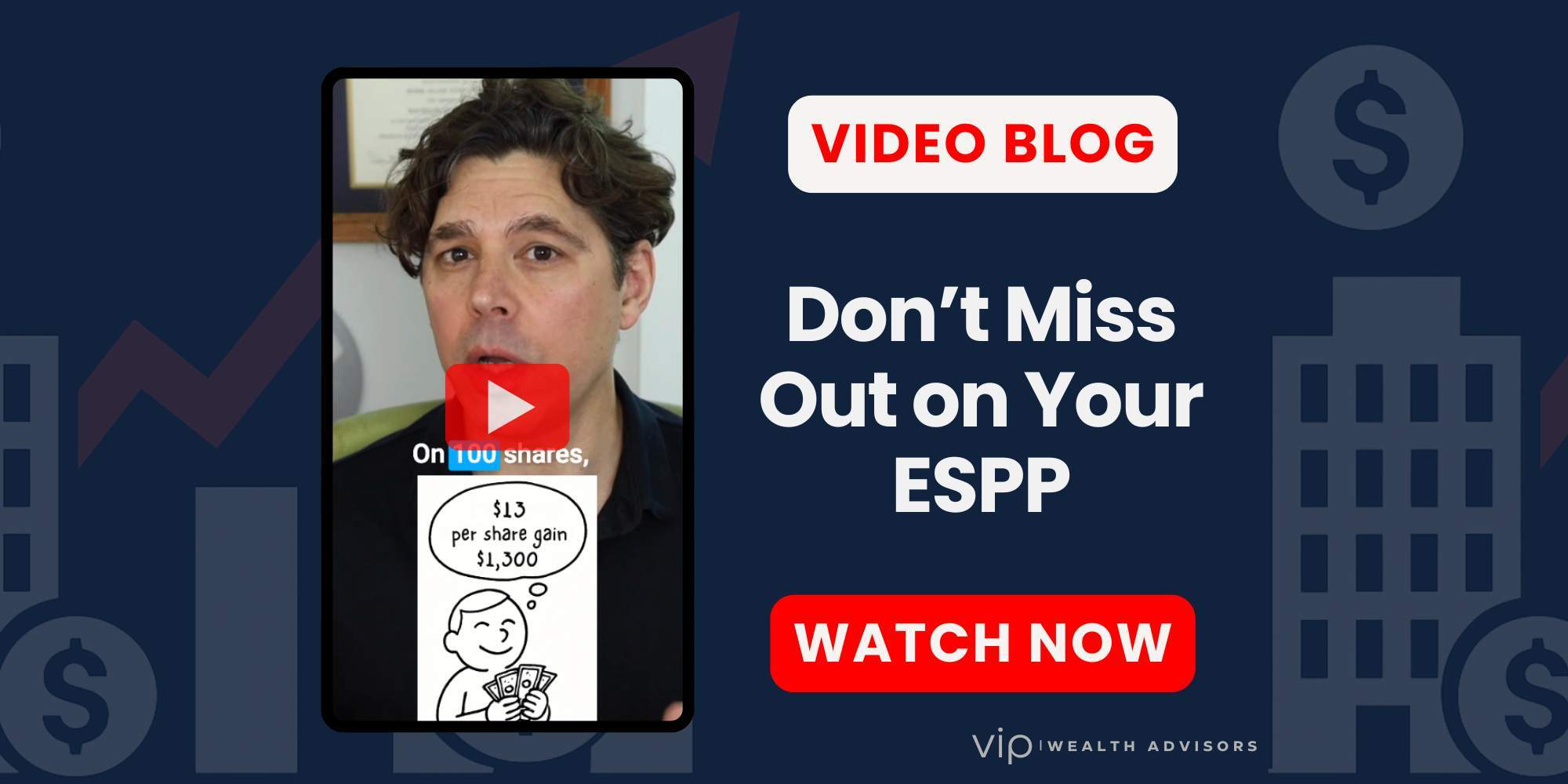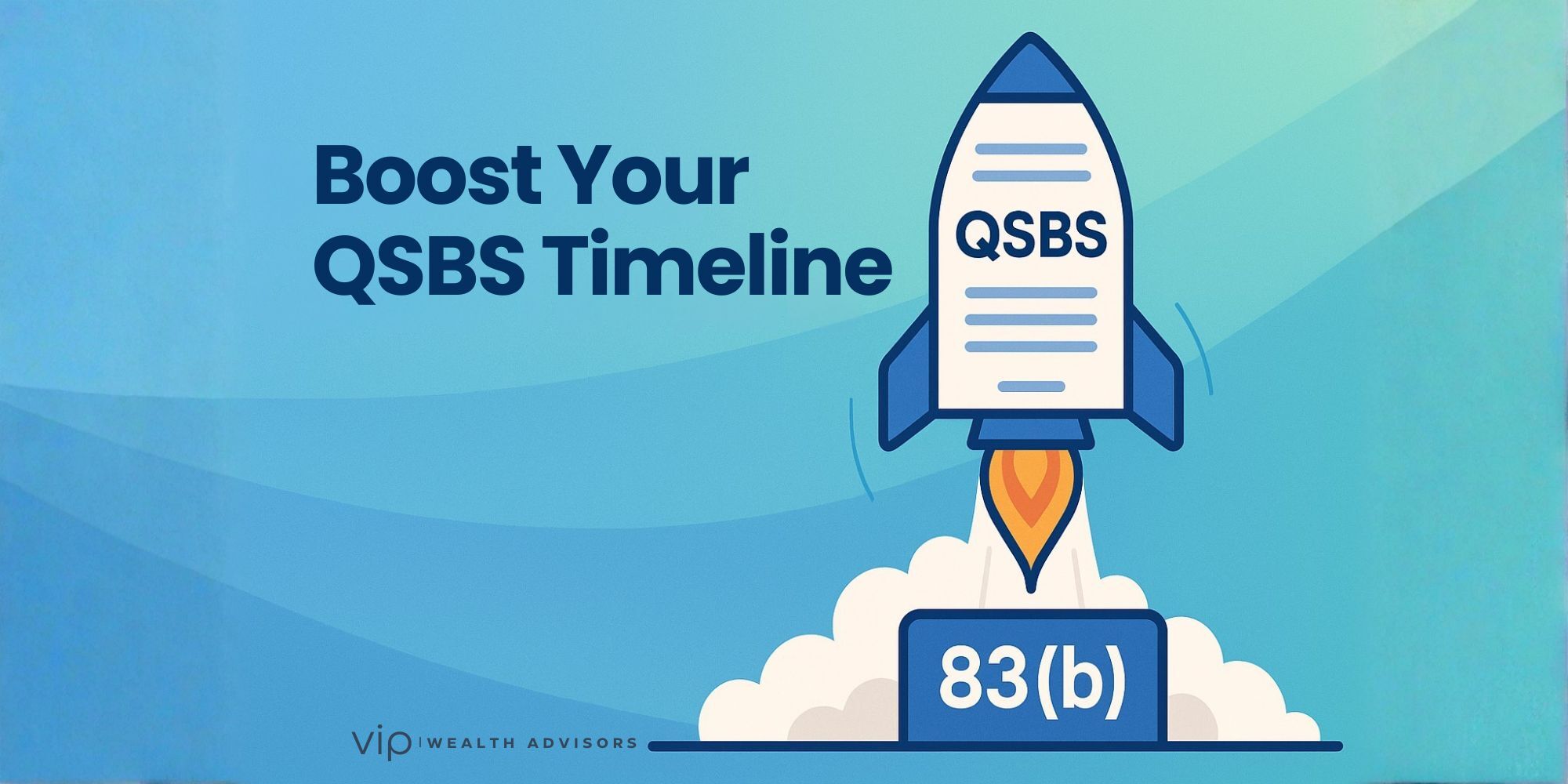For many employees at public companies, one of the most overlooked opportunities to build wealth is sitting right under their noses: the Employee Stock Purchase Plan (ESPP). While ESPPs can sound like alphabet soup in the world of equity compensation, understanding how they work - and how they're taxed - can unlock powerful financial benefits. This guide will walk you through everything you need to know about ESPPs, from mechanics to tax treatment, with real-life examples and planning tips along the way.
What Is an ESPP?
An Employee Stock Purchase Plan (ESPP) allows employees to buy shares of their company's stock - typically at a discount - using after-tax payroll deductions. Think of it as a stock subscription program where, instead of buying cereal every month, you're buying shares of the company you work for.
There are two main types of ESPPs:
- Qualified ESPPs (also known as Section 423 plans)
- Non-qualified ESPPs
We'll get into the distinctions shortly, but most ESPPs offered at U.S. public companies are qualified under Internal Revenue Code Section 423. That qualification opens the door to favorable tax treatment if you meet the rules.
Key Features of ESPPs
Let's break down how these plans typically work:
1. Enrollment Period
You sign up to participate during your company's enrollment window. You decide what percentage of your paycheck - up to 15% in most cases - you want to contribute.
2. Offering Period
This is the timeframe during which your contributions accumulate. It may last anywhere from 6 to 24 months. Many companies break it into shorter "purchase periods" (e.g., every 6 months).
3. Purchase Period and Purchase Date
At the end of each purchase period, your accumulated contributions are used to buy company stock, usually at a discount of up to 15%.
4. Lookback Provision
One of the most valuable (and confusing) features. With a lookback, the purchase price is based on the lower of:
- The stock price at the beginning of the offering period, or
- The stock price at the end of the purchase period.
Apply the discount (often 15%) to that lower price, and you’ve locked in an instant gain if the stock's trading price has risen.
Qualified vs. Non-Qualified ESPPs
✅ Qualified ESPPs (Section 423 Plans)
These plans adhere to strict IRS rules, but in exchange, they offer potential tax deferral and preferential treatment on capital gains.
Key features:
- Must be offered on an equal basis to all employees
- Maximum contribution: $25,000 per calendar year (based on fair market value at the offering date)
- Potential for favorable capital gains tax if holding periods are met
❌ Non-Qualified ESPPs
These don't follow Section 423 rules and don’t receive special tax treatment. They function more like a restricted stock or bonus compensation plan, with ordinary income recognized at the time of purchase or vesting.
How to tell the difference?
If your plan offers a discount of more than 15%, isn't offered uniformly to employees, or allows contributions exceeding the $25,000 limit, it's likely non-qualified. But most plans at large public companies are qualified.
Understanding ESPP Taxation
Here’s where things get tricky. The tax treatment of your ESPP shares depends on:
- Whether your plan is qualified
- How long do you hold the shares after you purchase them?
Let's focus first on qualified plans.
Qualified Dispositions vs. Disqualifying Dispositions
A qualified disposition occurs when:
- You hold the stock for at least 2 years from the offering date, and
- At least 1 year from the purchase date
A disqualifying disposition happens if you sell sooner than that. And the tax bill? It's very different.
Tax Treatment in a Qualified Disposition
Let’s walk through an example.
- Offering Date FMV: $20
- Purchase Date FMV: $30
- Discount: 15%
- Actual Purchase Price: $17 (15% off the $20 offering price)
- Sale Price: $40
- Shares Bought: 100
Step-by-step:
- Ordinary income: The lesser of:
- The discount on the offering date ($20 × 15% = $3), or
- The actual gain from purchase to sale ($40 - $17 = $23)
So here, you report $3 per share × 100 = $300 of ordinary income.
- Long-term capital gain: The rest ($40 - $17 = $23 gain – $3 ordinary income = $20 capital gain × 100 shares = $2,000)
💡 Bottom line: You get favorable long-term capital gains treatment if you wait.
Tax Treatment in a Disqualifying Disposition
If you sell the shares before meeting the holding period requirements:
- Ordinary income: The difference between the purchase price and the fair market value on the purchase date
($30 – $17 = $13 per share × 100 = $1,300) - Capital gain/loss: The rest (Sale price – FMV at purchase date = $40 – $30 = $10 per share gain × 100 = $1,000 capital gain)
Note: If the stock had dropped to $25 instead, you’d have:
- Ordinary income: $13/share
- Capital loss: $5/share
Yes, it's possible to owe ordinary income tax and have a capital loss. And yes—it's frustrating.
ESPP Quick Sale Strategy: Lock in Free Money
For most clients, we recommend a "quick sale" strategy:
- Participate in the ESPP at the highest percentage you can comfortably afford
- Purchase the shares at discount
- Immediately sell the shares on the purchase date or shortly after
Here’s why:
- You're capturing an instant arbitrage gain (typically 15–17.6%) risk-free
- You avoid holding a concentrated position in your employer's stock
- You simplify your tax reporting
- You remove exposure to volatility and compliance lockups
Even though a quick sale triggers a disqualifying disposition, the math almost always works in your favor. You're paying ordinary income tax on a gain you wouldn’t have had otherwise.
This strategy is especially appealing in a choppy market or when your company's stock price is near all-time highs.
Real-World Example: Quick Sale Mechanics
Let's say your company stock is trading at:
- Offering Date FMV: $20
- Purchase Date FMV: $30
- Discounted Purchase Price: $17
- Sale Price (same day): $30
You bought 100 shares at $17 = $1,700 total. You sold them immediately at $30 = $3,000 proceeds.
- Ordinary income: $30 – $17 = $13 per share × 100 = $1,300
- Capital gain/loss: None (you sold right away)
Simple. Clean. Profitable.
What If the Stock Drops?
Let's say:
- Offering date: $30
- Purchase date: $20
- 15% discount off lowest price (thanks to lookback): $17
- Purchase 100 shares at $17
- Stock drops to $16
Now you've got:
- Ordinary income: $3 per share ($20 – $17) = $300
- Capital loss: $1 per share ($16 – $17) = –$100
So you owe tax on a $300 income, even though you lost $100 on the sale. This is why it's critical to monitor price movement and avoid automatic quick sales in a declining market.
Pro Tips and Planning Considerations
🧾 1. Watch Your W-2
For disqualifying dispositions, the ordinary income portion is usually included in Box 1 of your W-2. But check your 1099-B from the broker—it may not reflect the right cost basis. You might need to make manual adjustments when you file taxes.
📈 2. Beware of Overconcentration
It’s tempting to hold ESPP shares long-term in hopes of long-term capital gains. But remember, your salary, bonus, and retirement benefits may already depend on your company’s performance. Diversifying can protect your financial health.
🏦 3. Coordinate with Your Cash Flow
If you're already maxing out 401(k) contributions and have a healthy emergency fund, ESPP is a great next step for extra savings. Just remember—the payroll deductions are after-tax and can impact take-home pay.
📉 4. Tax-Loss Harvesting
In rare cases where ESPP shares are sold at a loss (especially in volatile tech companies), consider harvesting losses for tax purposes. However, please verify whether any income is still recognized due to the original discount.
🧠 5. Use ESPP as a Short-Term Cash Strategy
Some clients use ESPP as a built-in savings mechanism—buying discounted shares, flipping them, and funneling the proceeds into other goals, such as debt payoff, vacations, or Roth IRA contributions.
Final Thoughts: ESPPs Are Free Money—When Used Right
Employee Stock Purchase Plans are one of the few benefits where you can literally earn free money with minimal risk—if you understand the rules. For most clients, the right move is to participate at a high level and execute a quick sale to lock in guaranteed gains. Yes, taxes apply—but you're being taxed on money you didn’t have the day before.
Of course, in some situations, it may be advisable to hold shares for a more extended period to realize long-term capital gains. But that should be a conscious choice, not a passive one.
Want a second set of eyes on your ESPP plan and tax strategy? We help high-income professionals make informed decisions about equity compensation, including ESPPs, ISOs, RSUs, and other options. Let’s make sure you're getting every dollar you’ve earned. 📆 Book a Discovery Call Today
View More Articles by Topic
- Taxes (73)
- Financial Planning (39)
- Equity Compensation (32)
- Investments (22)
- RSU (21)
- Tax Policy & Legislation (18)
- Business Owner Planning (14)
- Incentive Stock Options (14)
- Retirement (13)
- Psychology of Money (10)
- Real Estate (9)
- AMT (8)
- Alternative Investments (8)
- Pre-IPO Planning (8)
- Estate Planning (7)
- NSOs (6)
- The Boring Investment Strategy (6)
- Capital Gains Tax (5)
- Crypto (5)
- Fiduciary Standard (5)
- QSBS (5)
- Post-IPO Tax Strategy (4)
- 401(k) Strategy (3)
- Private Investments (3)
- Q&A (3)
- ETF Taxes (2)
- IRA Strategy (2)
- Irrevocable Trust (2)
- Legacy Wealth (2)
- Market Insights (2)
- Market Timing (2)
- Stock Market (2)
- Venture Capital (2)
- Video (2)
- AUM vs Flat Fee (1)
- Altruist (1)
- Atlanta (1)
- Book Review (1)
- Charitable Giving (1)
- Education Planning (1)
- International Financial Strategies (1)
- Precious Metals (1)
- QTIP Trust (1)
- Revocable Trust (1)
- Schwab (1)
- Solo 401k (1)








